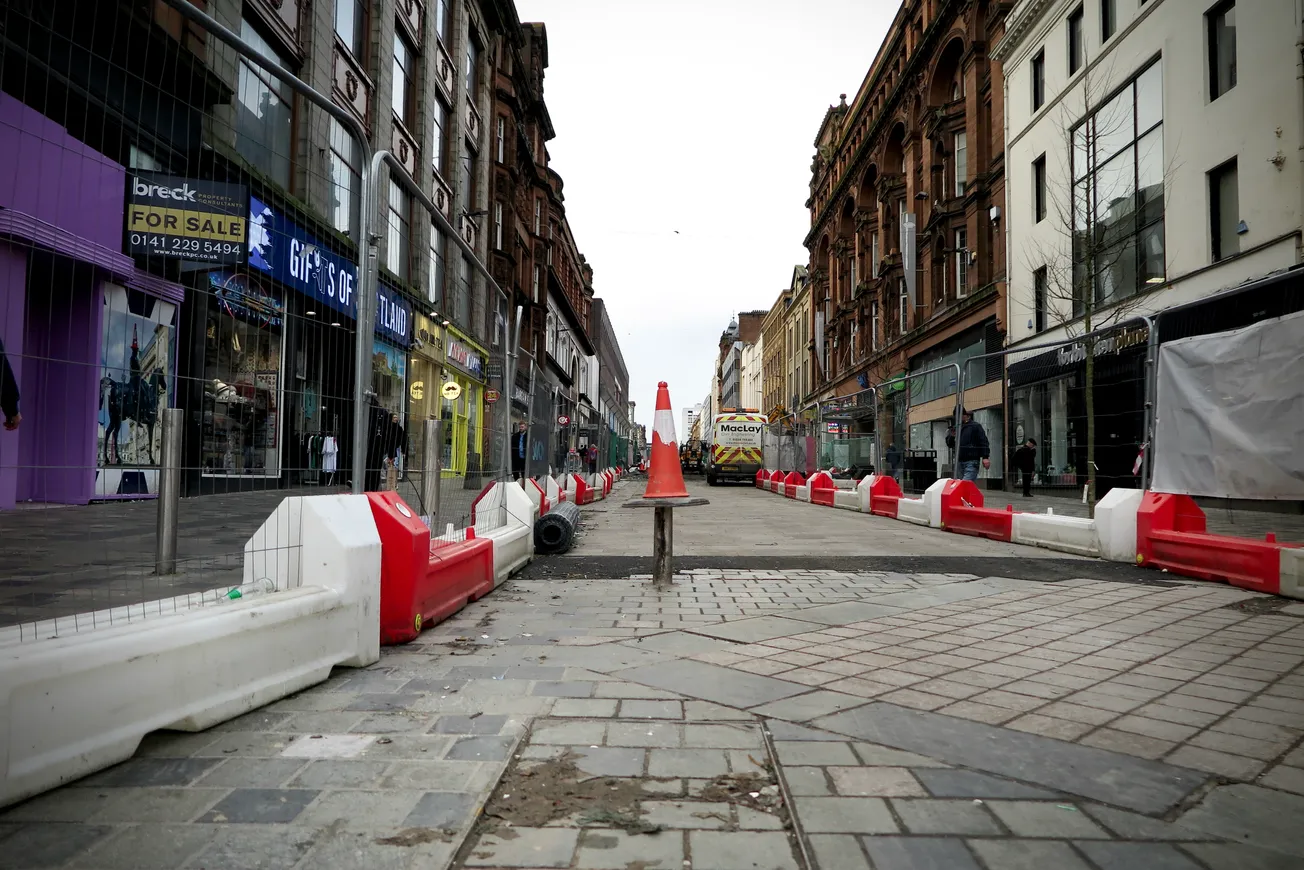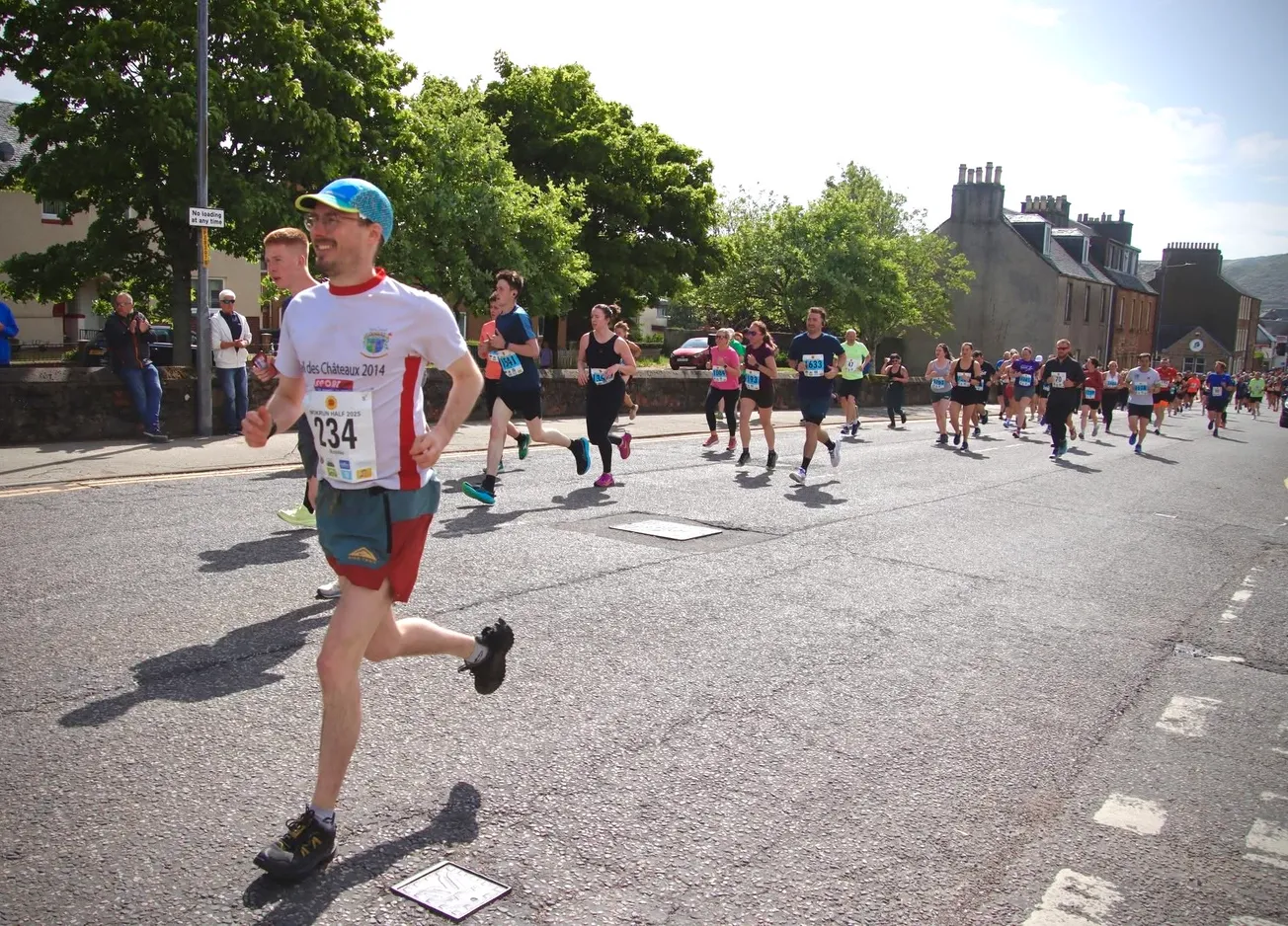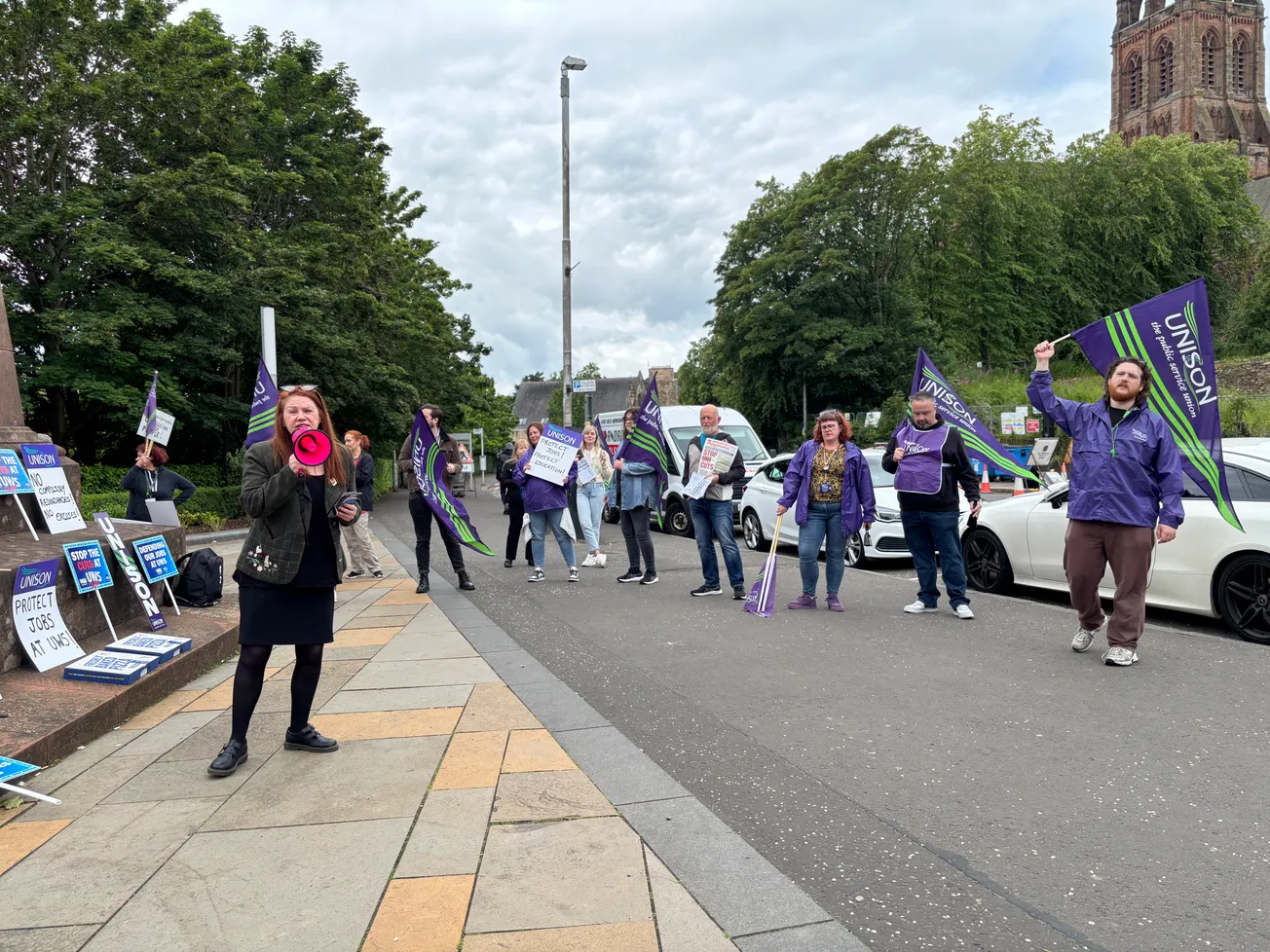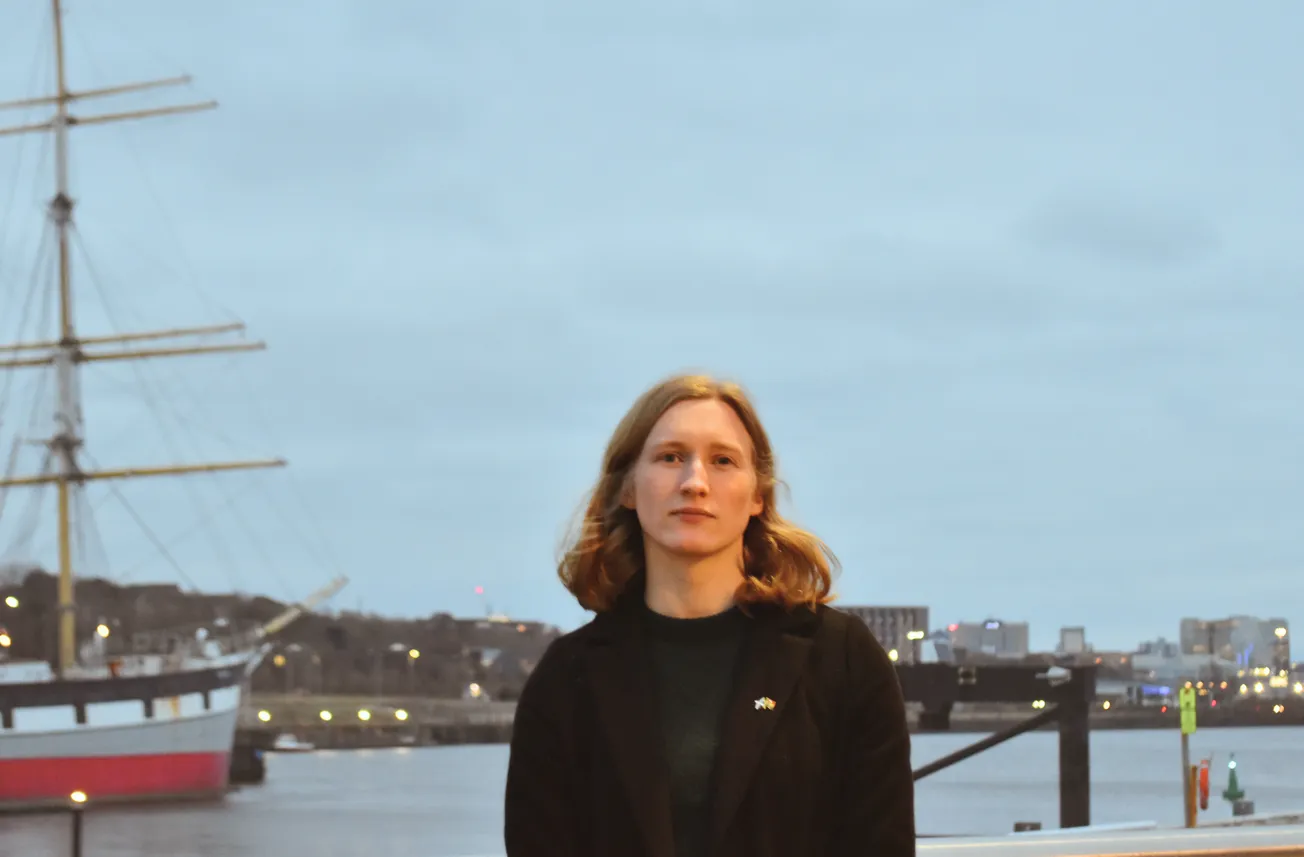“It’s a shame what they have done to Sauchiehall Street,” proclaims the newspaper headline. “Shuttered shops. Flashy pubs. Concrete… Aye, and nasty open spaces gaping like rotten teeth where the familiar buildings once stood.” The writer goes on to bemoan the many establishments that once lined the street. “At least Lauder’s bar is still there,” M.R.A. concludes. “I needed a refreshment to reconcile myself to the fact that for me, Sauchiehall Street has gone forever.”
This Sunday Post article was penned not in 2025, but 1975. “Plus ça change, plus c'est la même chose…” remarked Norry Wilson of Lost Glasgow, unearthing the piece from the archives last year. It’s a useful reminder that the conversation surrounding the demise of Sauchieha’ — the name of which comes from the willows that once grew in the marshy hough here — is far from novel.
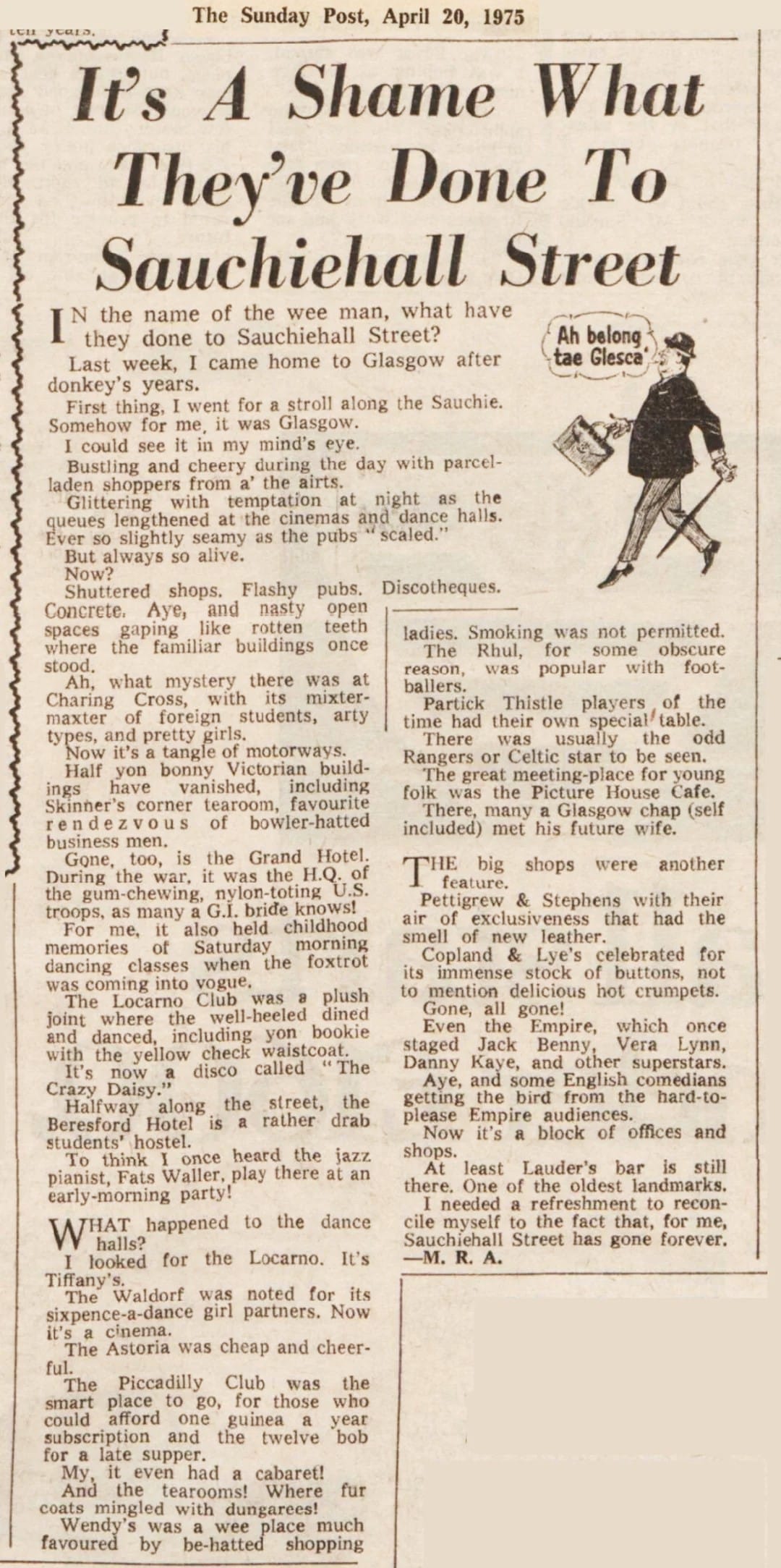
Up until the 1970s, the street was unrivalled as the city’s premier entertainment and shopping district, famed for its shops, galleries, department stores, theatres and music halls. The Empire Theatre, to name just one, hosted the likes of Judy Garland and Frank Sinatra in its heyday. It closed in 1963. Sauchiehall Street went through huge change in this period: the end of the tram network in 1962 and subsequent pedestrianisation; the comprehensive redevelopment of nearby areas like Charing Cross and Anderston; the construction of the M8 motorway in 1972; the economic downturn of the 70s; and a gradual population shift to Glasgow’s suburbs. One by one, the shops and big stores started to close, as did the cinemas.
Reading the news today, you could easily believe the so-called decline of the street is a recent phenomenon, but it’s perhaps more usefully framed as part of a gradual slide since its mid-century prime. Sauchiehall Street has endured many storms; its future though, given the many challenges it faces today, feels uncertain.
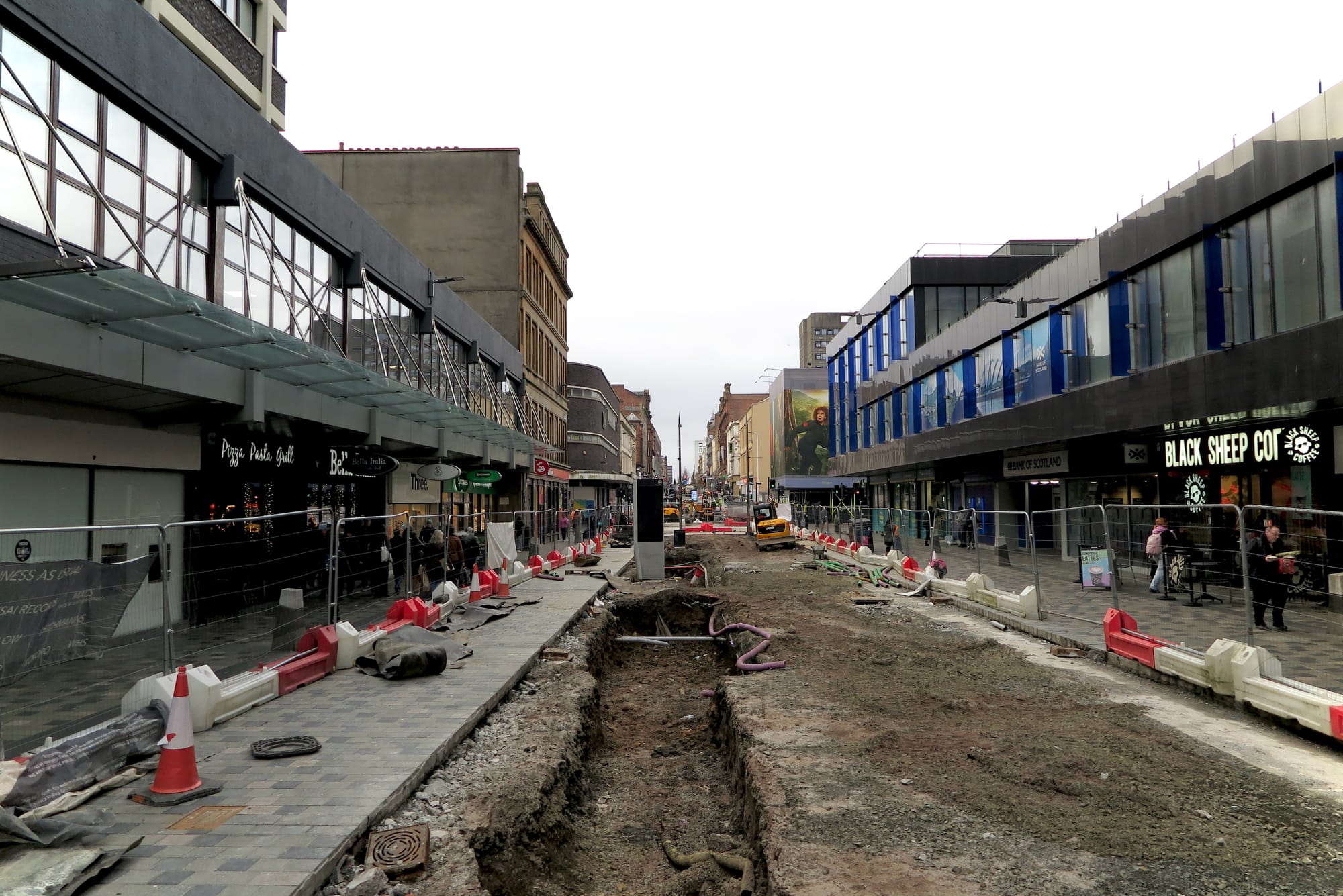
In February 2014, the BBC aired The Street, an observational reality TV series following “a year in the lives of the people who live, work and play on Sauchiehall Street”. It was a production of Friel Kean Films, creators of the controversial series The Scheme, which followed the lives of six families in two Kilmarnock housing schemes. Like The Scheme, The Street favoured the controversial and dramatic to the prosaic and quotidian, introducing viewers to struggling shopkeepers, a busker battling racist abuse, midnight revellers, street pastors, and psychics (no, not Kizzy, before you ask).
At the start of episode one, we see the Savoy Centre’s manager Jim sitting in his office on the phone. He’s heavily built, in a pale blue shirt, with sweat patches under his oxters. He explains how the arrival of online shopping is impacting the bottom line of independent retailers. There seems to be a dividing line, says Jim. “[H]igh-end retailers like John Lewis and supermarkets [...] seem to be doing reasonably well, but the smaller, the more independent, the more niche, are struggling.”
We also make the acquaintance of recently sober chef Nick, who’s trying to get his café off the ground, and street artist Bullet Beard — today, better known as signwriter and graphic designer Ciarán Glöbel. “Unfortunately, the uploading of the series into YouTube [in 2024] has reminded a few people of my cringe era,” he says over text message. “But fuck it, it’s all part of the lore”.
None of The Street’s business owners have stood the test of time on Sauchiehall. The only notable characters still around today, it would seem, are the Street Pastors who patrol the city centre on the weekends, with a mission “to care for, listen to and help people who are out on the streets” — and spread the teachings of Jesus too, of course. The series made much of their calling amid the chaos and debauchery of Sauchiehall Street; partygoers, mischief-makers carrying cones, people being pushed around in shopping trolleys; numerous street brawls.
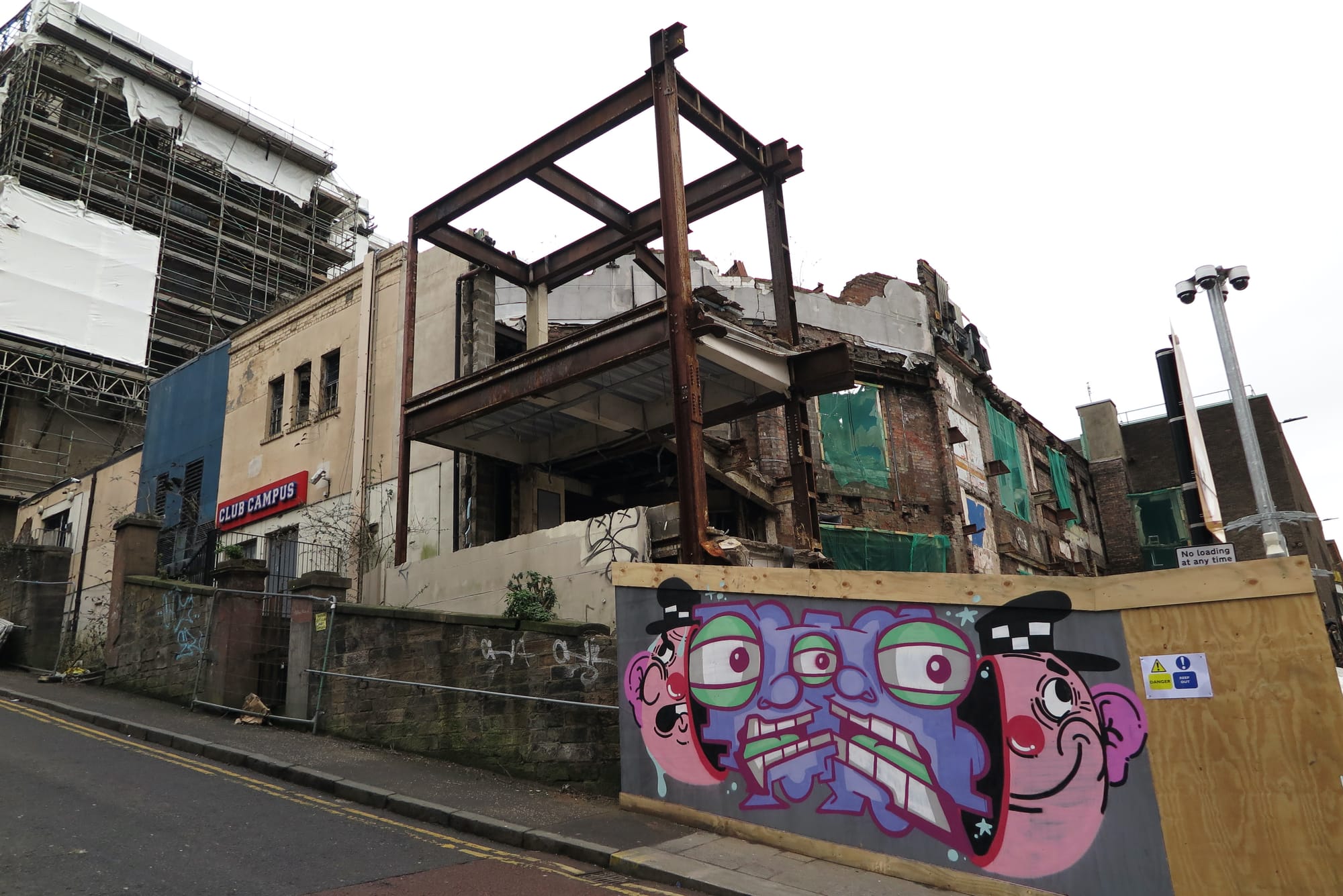
In The Street’s mid-2010s snapshot of Sauchiehall Street, scores of vacant units lay empty, boarded up or covered with graffiti. This only worsened post-broadcast; as successive fires ripped through the Glasgow School of Art, four years apart. It was the second that dealt the body blow, not only hollowing out the Mack but also the ABC — which had survived as an entertainment venue since opening as the Diorama in 1875 — leading to the latter’s eventual demolition last year.
As well as the ABC, lots of other venues depicted — Jumpin Jaks, Barbushka, Couture — are now also long gone. Others, such as Lush and Greaves Sports, have since relocated to other less blighted parts of the city centre. Lauder’s is still there though.
But an attempt to resuscitate Sauchiehall is under way. First, there’s the significant regeneration the street has undergone in recent years, particularly at its western end — the pilot project of the £115m Avenues Programme, which aims to transform the city centre via trees, cycle lanes and increased pedestrianisation. And then there’s a new scheme afoot, which is attempting to revitalise Sauchiehall as a cultural hub. But is it too late?
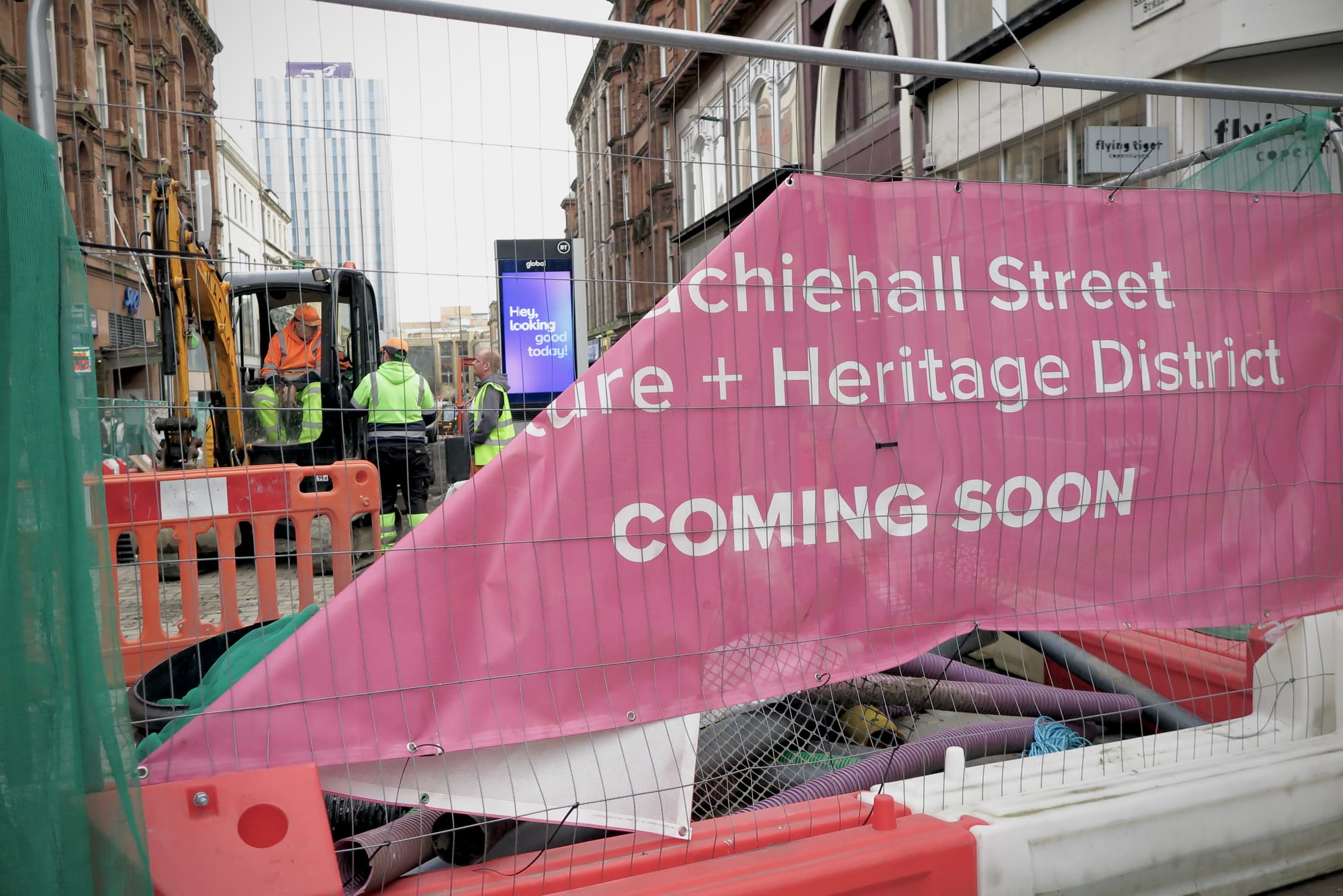
It’s a Tuesday lunchtime, and Billy Garrett, director of culture, tourism and events at Glasgow Life, is sitting at the centre of a long table in the new Project Space in Empire House. He’s smart in his blue suit and stripey tie. Garrett is dressed for the launch of the Sauchiehall Street Culture and Heritage District, an 18-month-long development project that will work with residents, visitors, businesses and cultural organisations to create a new vision for the street.
As Garrett talks, the sound of diggers reversing outside bleeds into the room. Avenues-related roadworks have seriously overrun due to the installation of a new drainage system to ease pressure on the main sewer network. Behind Garrett, ‘Sauchiehall Street Makes Glasgow’ panels are displayed, along with archive pictures of the street. (As part of the project, a cultural and heritage map has also been created in collaboration with the University of Glasgow.)
Garrett starts by talking about the status of Sauchiehall Street, as well as the challenges it has faced in recent years. Some are specific to Sauchiehall Street; others, he says, are familiar to high streets up and down the country. He’s frank and honest about the problems facing the area, but quietly hopeful about its future. When the sound of heavy machinery starts to screech, he deadpans, “A bit of WD40’s required there.” He wraps up by emphasising how important it is to “safeguard the heritage to generate economic benefits for everyone around Sauchiehall Street to work, live, learn and invest”.
Garrett is sympathetic to cynicism when it comes to Sauchiehall. “There's a significant narrative in the media about Sauchiehall Street,” he says in an interview after the press launch. “I get that, but what do you do? What is your response?” He believes the council needs to propose a strategy that addresses the criticism. “There’s a specific nature to Sauchiehall Street … Its iconic status, that concentration of cultural institutions, that heritage, that memory. It's just part of Glasgow's DNA [...] it plays a pivotal role in the city, which I think can’t be ignored.”
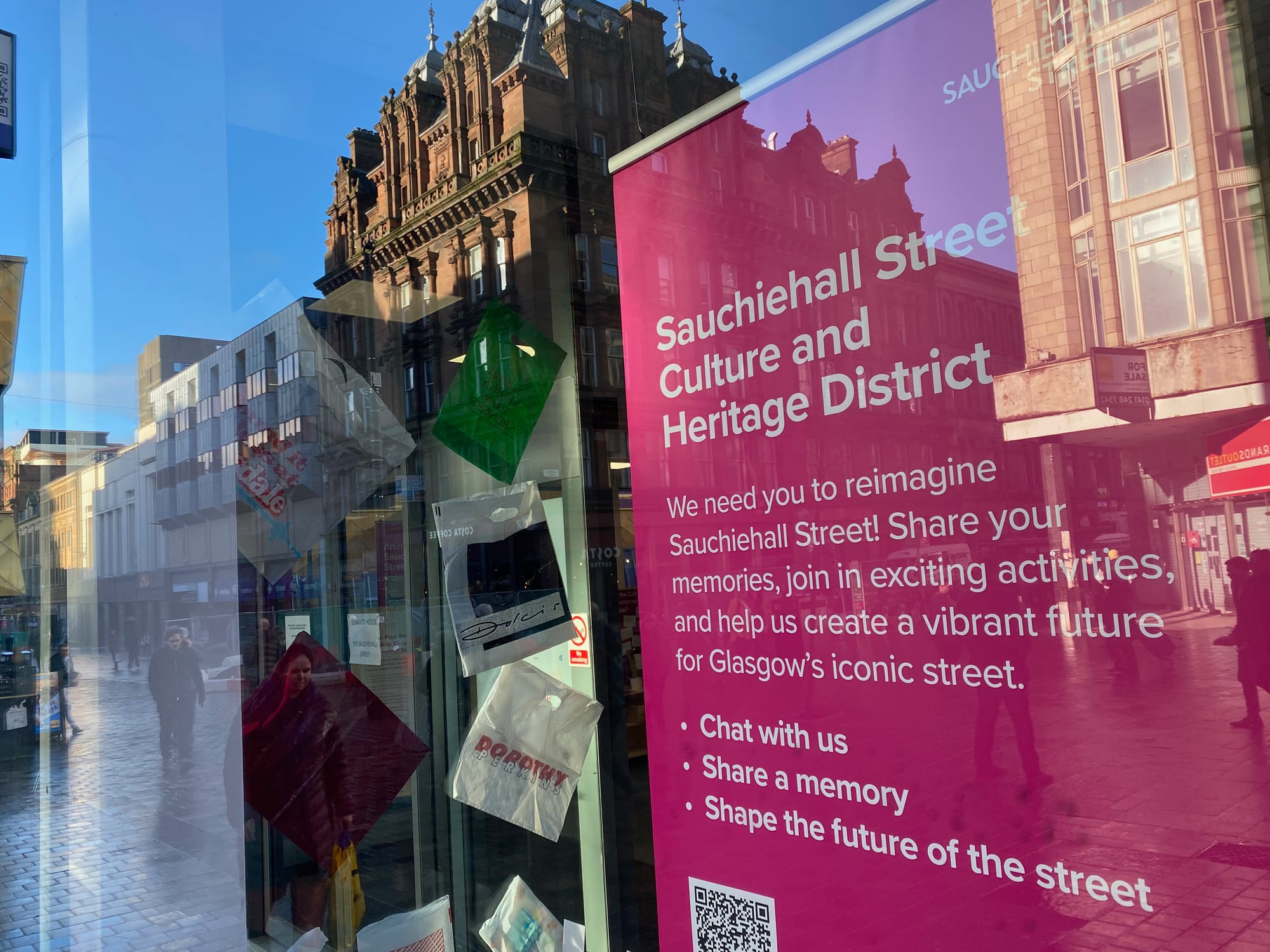
He’s under no illusions that running a series of events on the street is going to “make transformational change to the future of the street”. Instead, he says, “It’s about beginning to change the narrative, change the look and the feel, change the dynamic, maybe even put a smile on people's faces, and just get people to think slightly differently about Sauchiehall Street.”
Part of the launch of the Culture and Heritage District was supposed to involve Glasgow's ‘big outdoor Strip the Willow’, a nod to a time when the street was no more than a willow meadow, as well as its heritage of dance and music. The plan was to dance down the recently reopened pedestrian thoroughfare, “to celebrate a new year, and new street”. Unfortunately, owing to Storm Éowyn, it was cancelled. I tried my utmost not to read into this as a portentous sign. It has since been rescheduled for 15 February. The forecast is for light cloud and a gentle breeze.
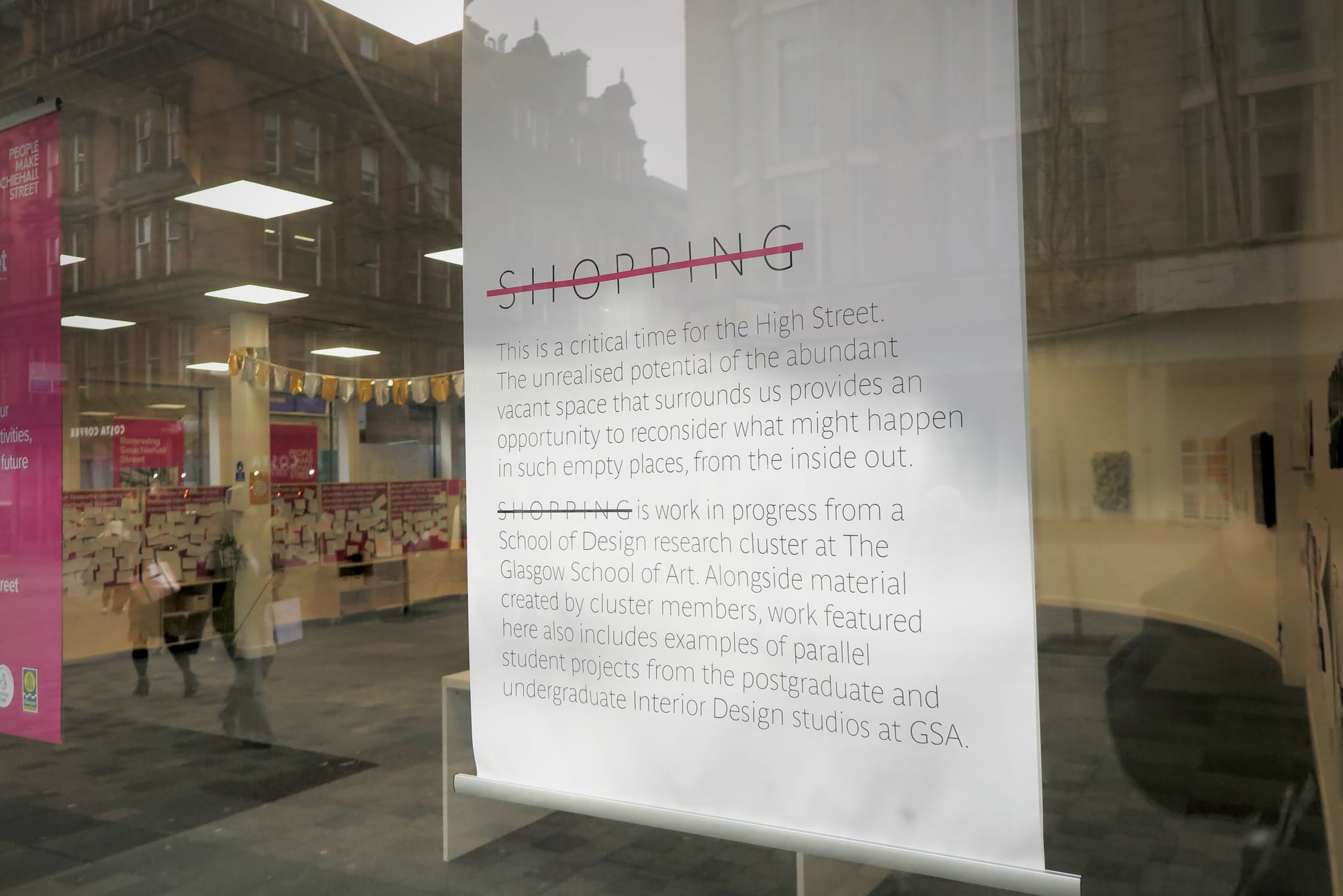
Walking down Sauchiehall Street a few weeks after the event, it’s hard not to notice the ghosts of big retailers. Marks & Spencer is notable in its absence; while BHS, HMV, Watt Brothers and Sports Direct are all long gone. In their stead are many vape shops, bubble tea bars and pound shops.
At the Savoy, I speak to several unit holders: all say footfall has fallen over recent years. Online shopping, the fires, the pandemic — all have delivered a succession of left/right hooks to business owners of all sizes. Plus, traders are deeply unhappy with continuous roadworks, still dragging on.
Further up, at VGO Barber next to Tesco Express, Mario, a cheerful Kurdish man in his mid-twenties is taking a break on a quiet Monday afternoon. The barbershop has been here for seven years. Mario has worked here for two of them, initially coming in for a haircut when he first arrived in Glasgow. “It was so buzzing, Sauchiehall Street used to be mad busy,” he says. “Last year was a mess because of the roadworks. It was supposed to take a few months — it’s taken a year.”
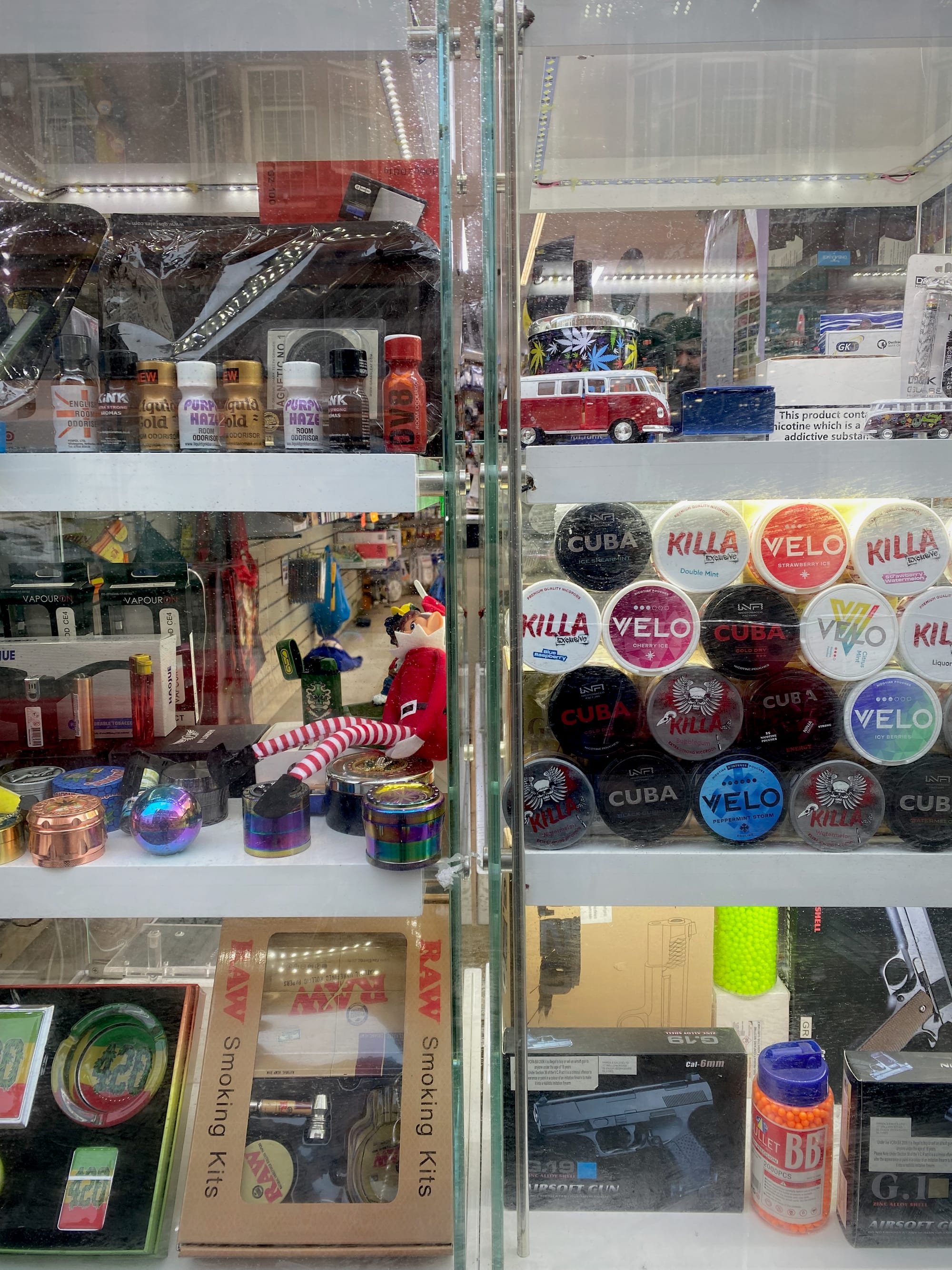
Business was impacted by the ‘improvement’ works. Now finished, little change is detectable. “To be honest, it looks the same,” Mario says. “But we’re really happy to be open up again. It was really difficult but it’s been picking up since they took the barriers away.” He doesn’t rate the new trees either. “They’re so skinny, no leaves — the old trees were nicer, much greener.”
I wander past the half demolished skeleton of the ABC, the shrouded Mack and the currently closed CCA, the latter gearing up to re-open following successful multi-year funding from Creative Scotland. At Hengler’s Circus, I finally encounter some of the old Sauchiehall Street buzz. Unsurprisingly, it’s Wetherspoon’s, named after the circus that moved into the ABC in 1904.
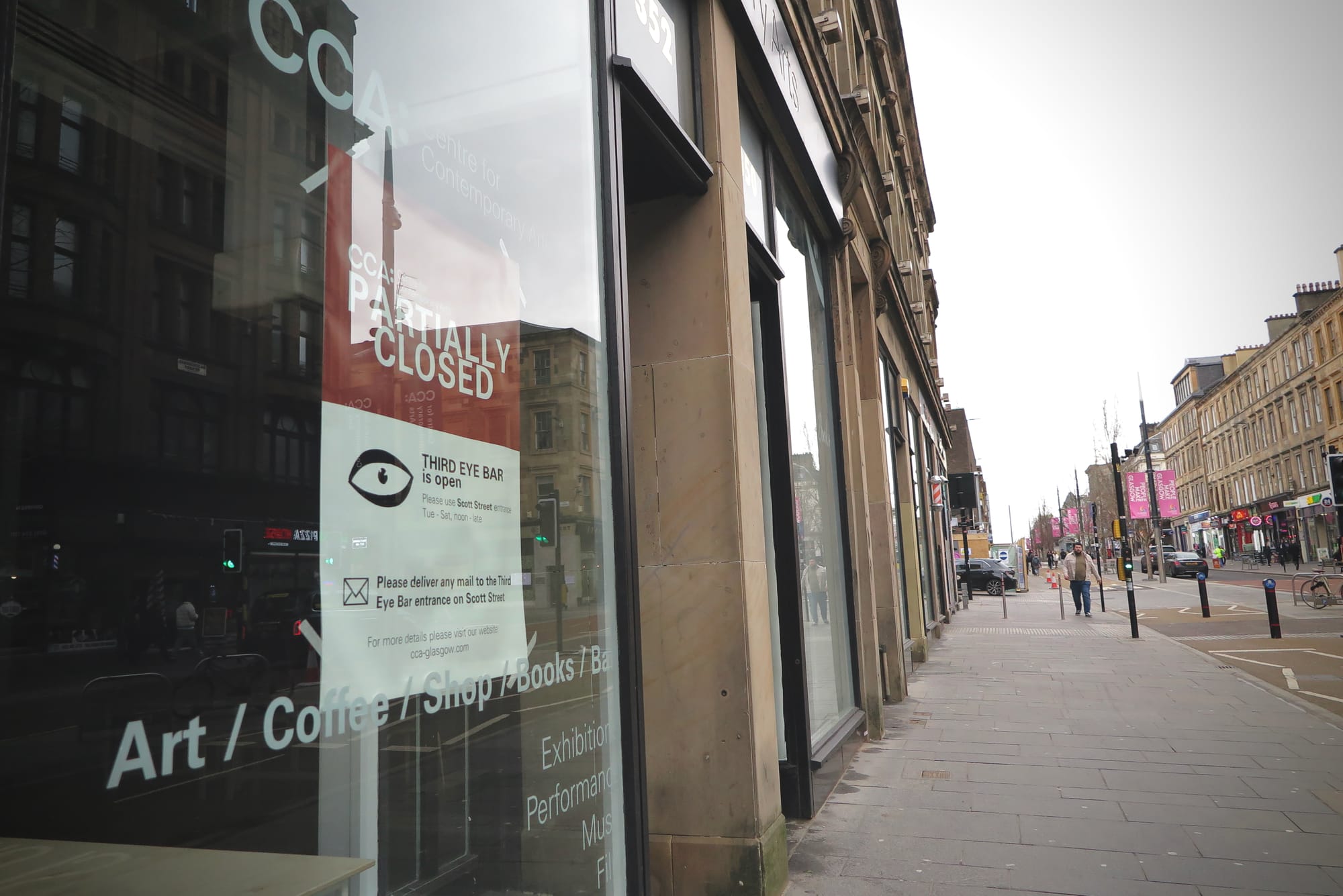
I stop at DunDun Xiang Cuisine to speak to Kevin Chan. He praises the growing number of Chinese students who frequent his restaurant, and have helped, in part, to revive the fortunes of the street. “The Chinese community is up and coming, it's growing. Personally, I’m Chinese, but I was born in Scotland, and I opened restaurants to cater for everyone, even locals. But now you actually open a restaurant not for the locals, but for the Chinese. It's kind of funny for Sauchiehall Street.”
On the state of the street more generally, he’s pessimistic. “What they've done to Sauchiehall Street looks good, but it just ruined the businesses, simply. There's no parking, people can’t get in ... You can't park to offload for business owners to drop off stock. So it's been a nightmare for businesses”.
Chan believes this side of Sauchiehall Street won’t pick up unless “some sort of miracle happens”. “Most of them happen on the other side of Sauchiehall Street, which has been spending a lot of money on development, but on this end, it's not really been happening at all. I really don't know — and all these cycling lanes and all, it's just created a lot of hassles as well.”
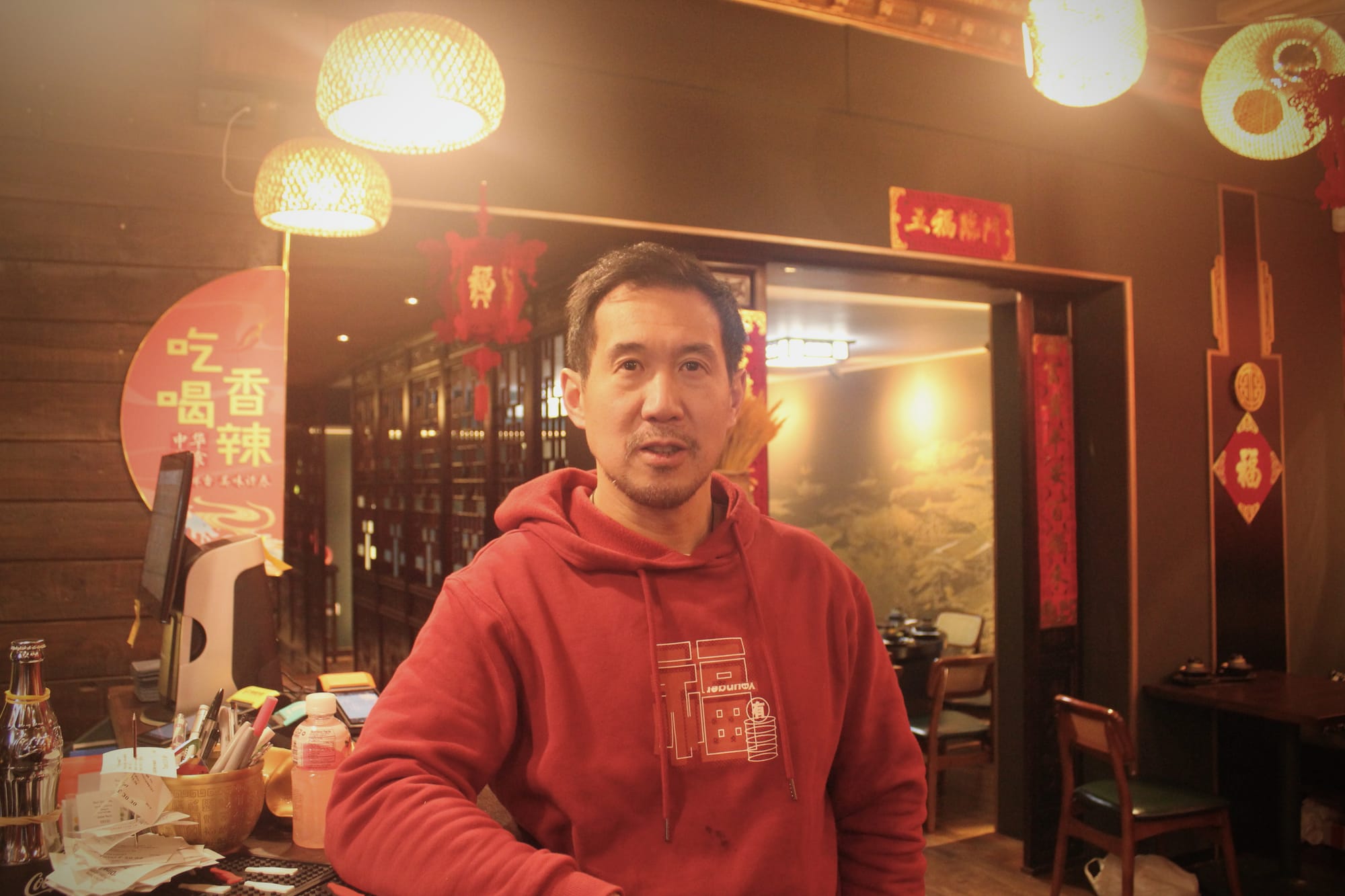
Nico’s, a little further down, opened in 1979 with a promise to “bring a little French magic to the Champs Élysee of Glasgow, Sauchiehall Street.” When I stroll in, a barman is holding court with the regulars. He’s worked here for seven years. “When I started here, the Art School had only burnt down once,” he says, pausing to roll his eyes for dramatic effect, rewarded with a good chuckle from his audience. “There was the ABC, Campus, it was booming. I’ve seen the comedown”.
But he quickly counters the traditional narrative of decline. “Everyone keeps saying this street’s dying — it’s no dying, it’s the best it’s been since Covid.” Nico’s, he says, has had their “best two years ever”.
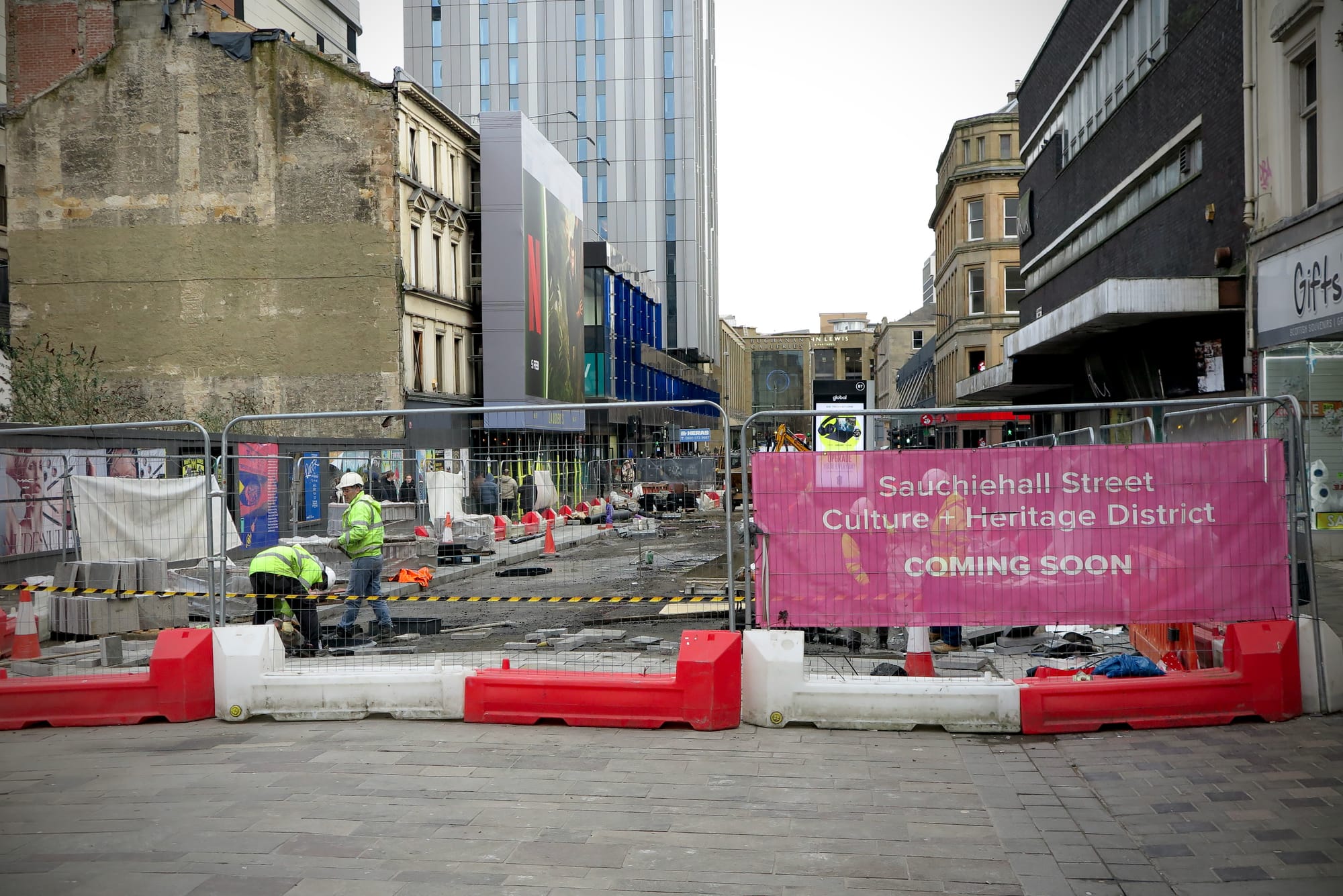
He thinks businesses moaning about a downturn have themselves to blame. He refuses to name names, but The Garage, which used to boast that it was open “seven days a week, 365 days a year” is now only open Thursday to Saturday. Its owner, Donald Macleod, has written various articles, calling Sauchiehall’s regeneration a “fiasco”, “a stark symbol of mismanagement and neglect” and simply the “Nightmare on Sauchiehall Street”.
“All you see is negative stories,” Nico’s bartender adds. “What do you think that does?” People will read that then not bother coming”.
Back at Project Space, Garrett echoes his words.
“People have written off neighbourhoods in Glasgow before,” he says. “And you know what? That's always been a mistake”. He cites the Gorbals, Govan, and Finnieston. “It can take a while, but I tell you, you write off anywhere in Glasgow at your peril. Sauchiehall Street, I tell you what — this is the next hotspot, this will be the phoenix rising from the ashes. It absolutely will be.”
Comments
How to comment:
If you are already a member,
click here to sign in
and leave a comment.
If you aren't a member,
sign up here
to be able to leave a comment.
To add your photo, click here to create a profile on Gravatar.

